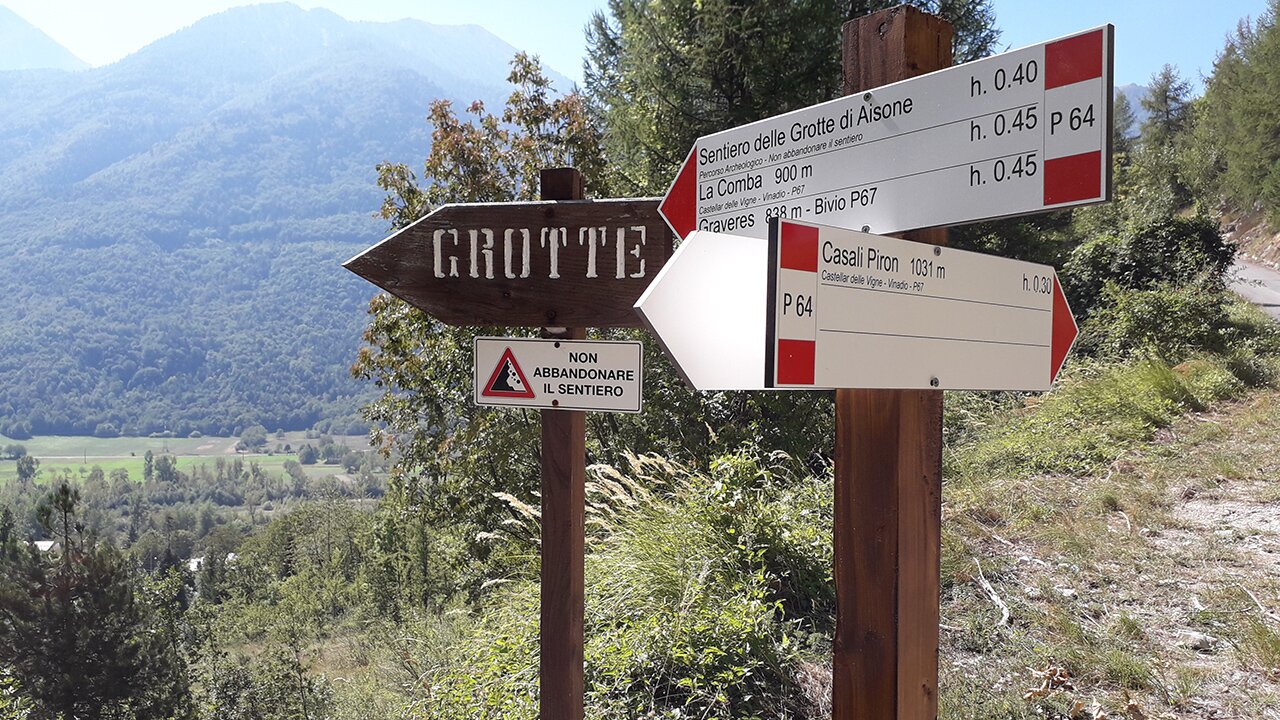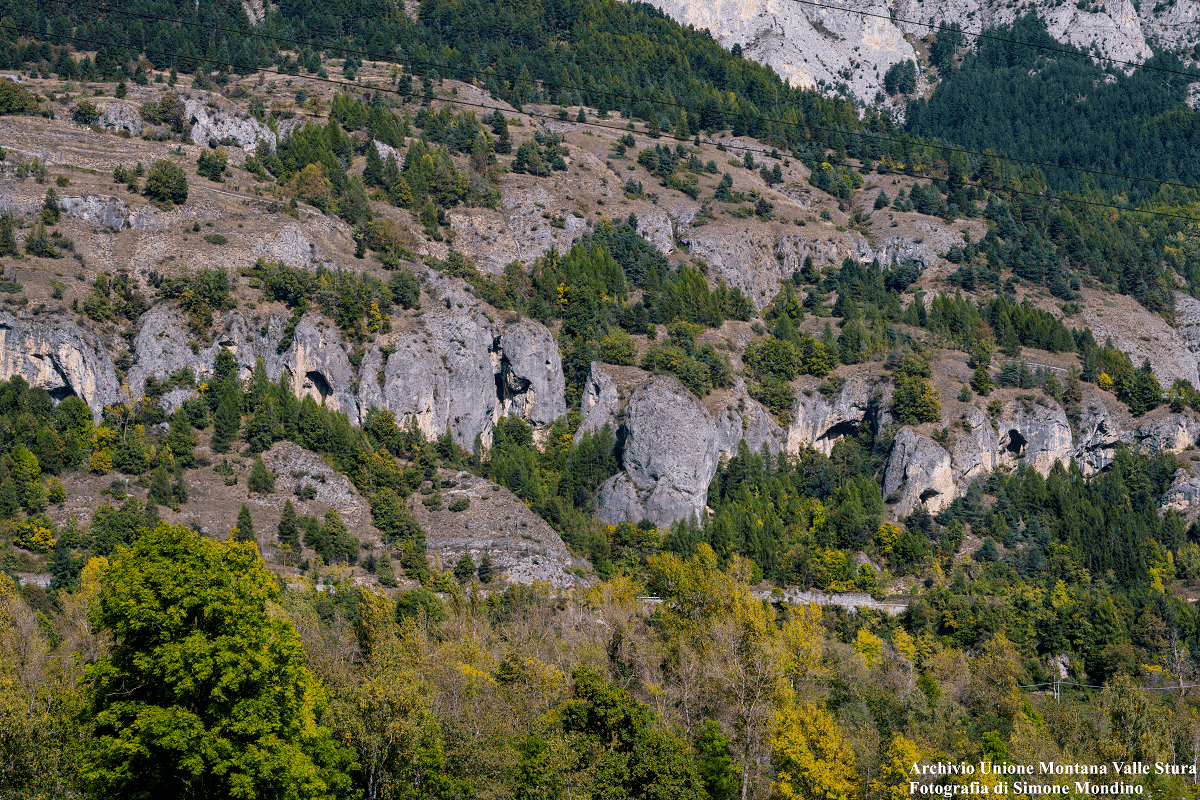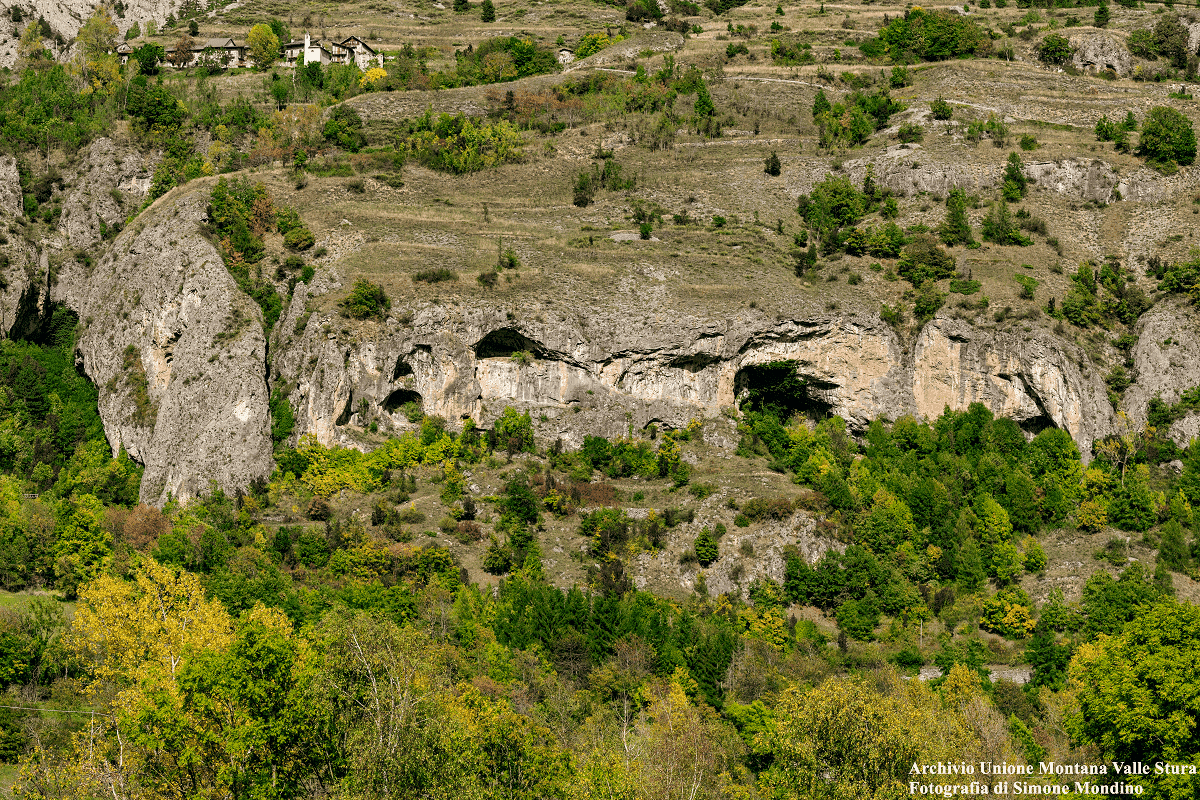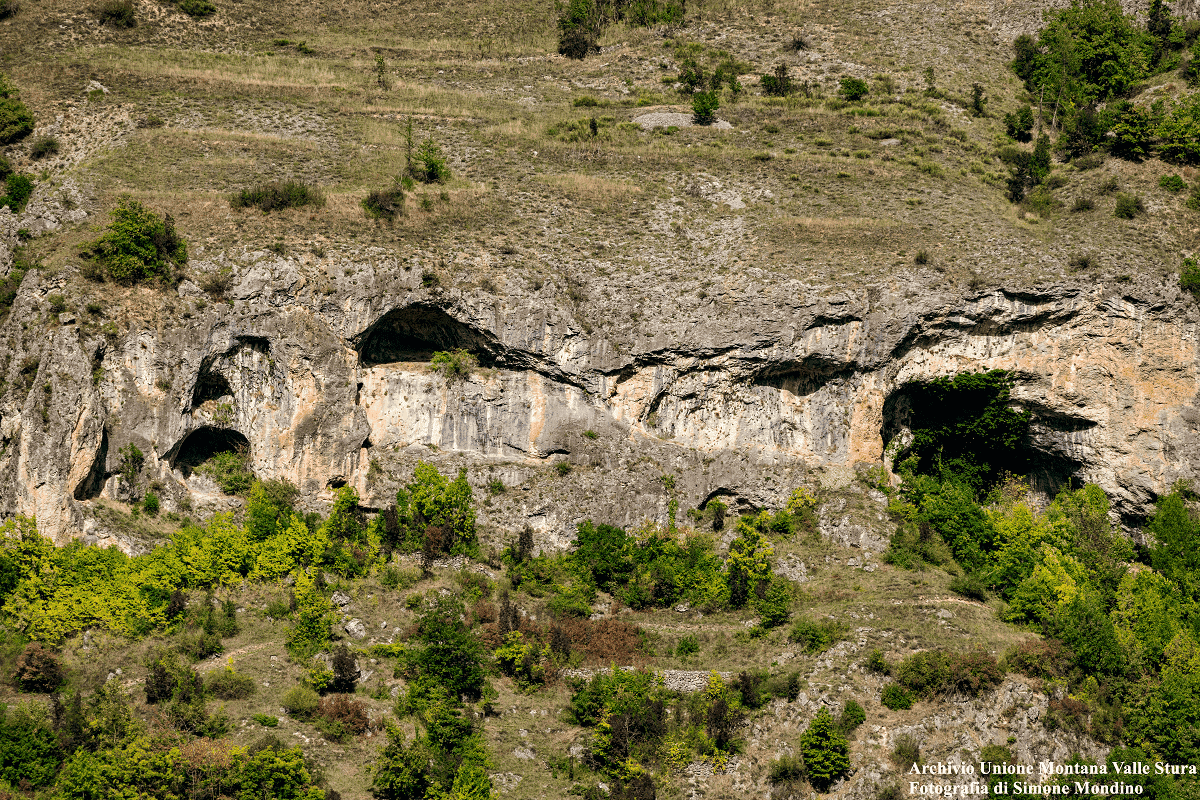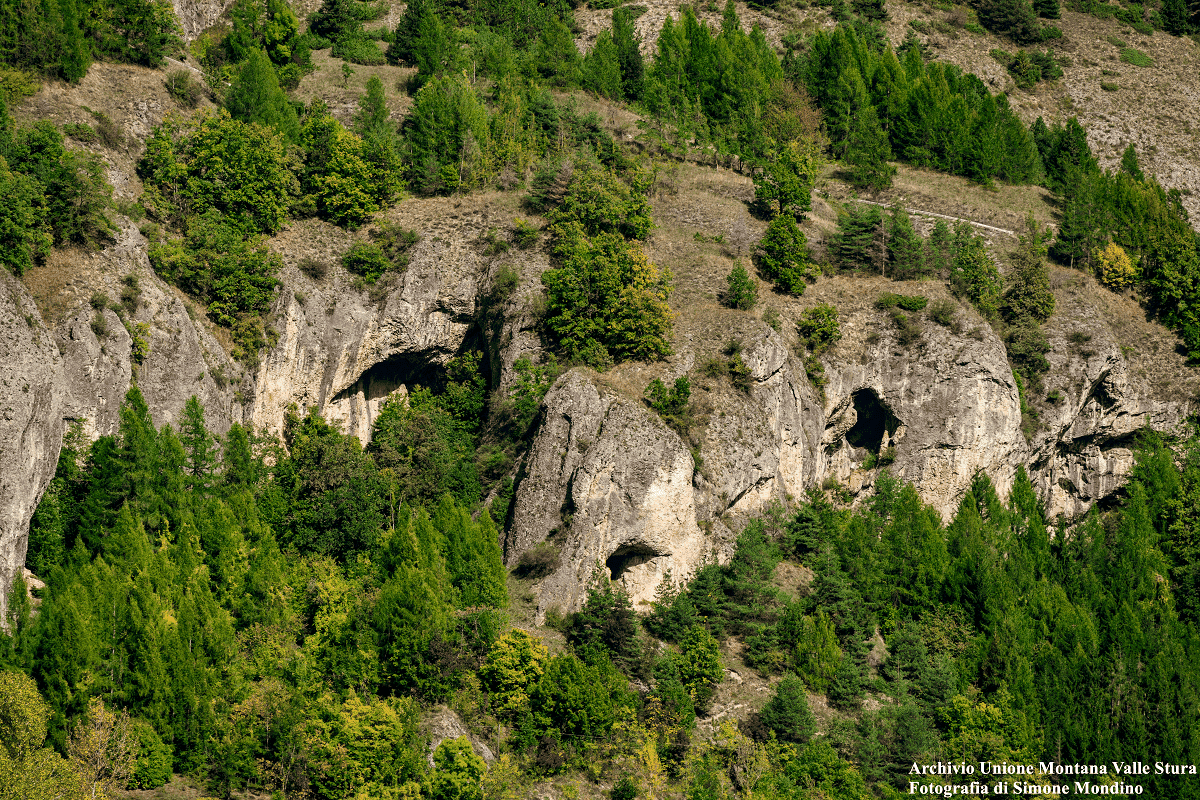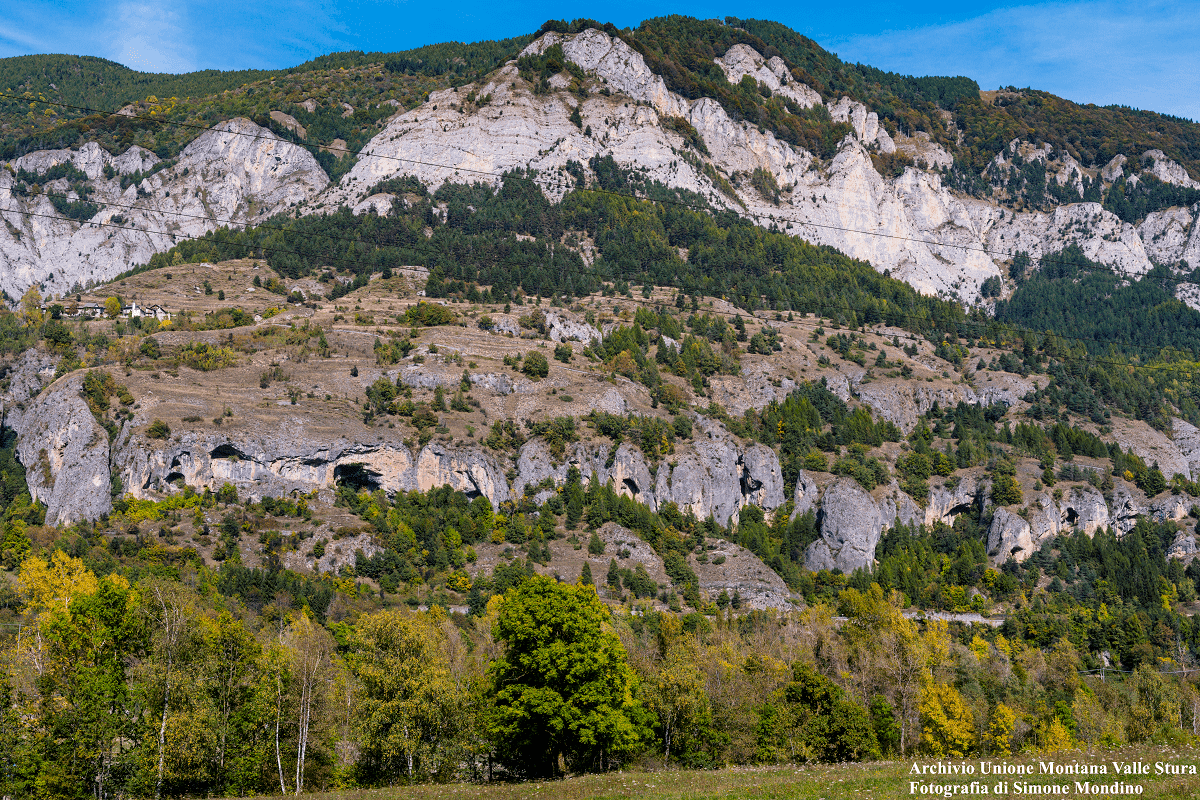Aisone Caves Nature Reserve
The Aisone Caves Nature Reserve was established by the Piedmont Region in 2019 to protect and enhance biodiversity and the archaeological site. The area, despite being only 26 hectares in size, is of significant naturalistic interest, which is why it was already included in the boundaries of the Special Protection Zone “Alte Valli Maira e Stura.”
Terraced fields, fallow land, wooded areas, and rock walls characterize the territory of the small nature reserve. But the real distinguishing feature, is represented by shallow caves, locally referred to as les barsaio. Occupied seasonally since the Neolithic period, they represent the oldest evidence of human presence in the Stura Valley.
The sunny slope and the presence of water favored in historical times the typical crops of the Southern Alps: rye, lentil, potatoes and hemp. The latter, used to make ropes and textiles, was soaked in spring water during processing, which collected in tanks (locally nais) still visible at the “caves.” There were numerous vineyards and, according to chronicles from the 1700s, a production of more than 34,000 liters of wine was obtained from the harvested grapes. Grape varieties of various types were used until the beginning of the last century, then cultivation was gradually abandoned.
The creation of the Reserve also responds to Europe’s request to ensure the conservation of biodiversity and especially the present birdlife included in the Birds Directive, which protects species at risk of extinction or vulnerable because they are linked to specific habitats.
In the 26 hectares of the protected area, in fact, golden eagles, peregrine falcons can be observed, and during migration periods, short-toed eagles and honey buzzards can be easily spotted.
Significant is the presence of a small colony of jackdaws, one of the few established in the alpine range. Also linked to this cliff environment is the mountain swallow. In the mid-seasons, chamois, deer and roe deer can be observed. The more observant visitor will not miss the opportunity to detect the presence of more elusive animals such as wolves, badgers, pine martens and martens.
The Reserve encloses within its boundaries a flora that is characterized by the presence of several species of orchids the cave fern and stipa pennata.
For visiting the Reserves, the Maritime Alps Protected Areas Management Authority has laid out the “Cave Trail,” a marked itinerary equipped with panels that traverses the protected area, touching on the points of greatest interest.
The “Cave Trail”
The start of the trail is at the Taverna delle Grotte, a place used as a bar and store where you can taste and buy local products, cross the public gardens and continue along Occhie Street. After following the road for a few meters, you leave it (sign) to go down a short staircase on the left from which the Sentiero delle Grotte starts.
The route continues halfway up the hillside, passes through mixed forest and leads to a junction: leave the turnoff for Ciancamentes and continue downhill following the Cave Trail signs.
You walk behind houses in the town of Aisone and reach the paved road to Case Piron. Follow it uphill to a wide curve to the left from which the Trail resumes.
We walk downhill approaching the walls where some caves open and then to the famous shelter 10 (panel) where traces of a Neolithic seasonal settlement have been found.
The route passes through a narrow and striking notch between rocks and then descends a steep section. You walk through the woods and then alongside walls until you reach a pergola rebuilt to house vines (panel) in memory of the old local crop. Still following the trail, you reach the dirt road that climbs from Gravers. Follow it uphill (signs) arriving at La Comba, a small hamlet surrounded by walls and spires. Follow the signs for Pirone, leaving the detour for Castellar di Vinadio. You then enter a small valley that you must leave almost immediately to climb to the right up the steep little path that passes the rocky ramparts of La Comba and leads to Pirone.
Drive through the small village (fountain) past the small church and down the paved roadway to the fork encountered on the way from which you return to the starting point.
More info: https://www.grottediaisone.areeprotettealpimarittime.it/sentiero-delle-grotte


